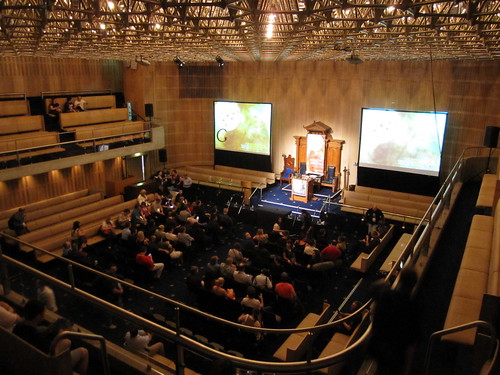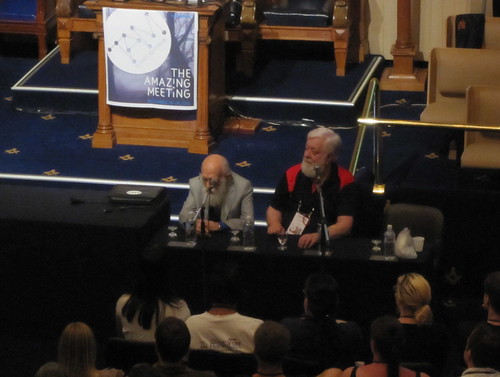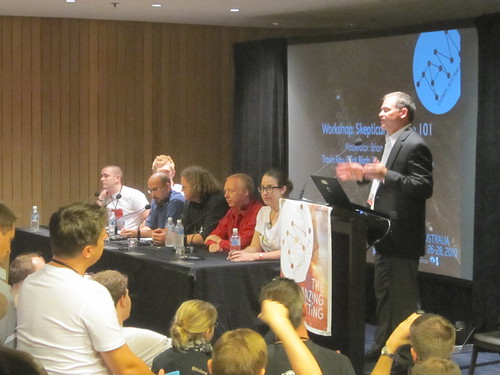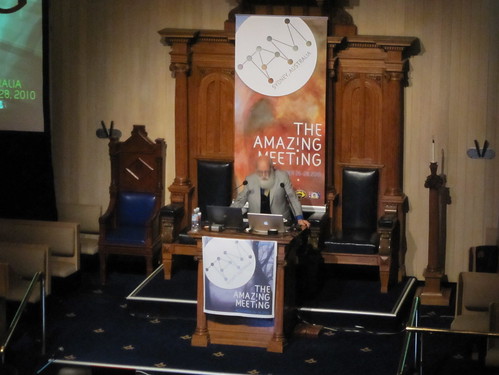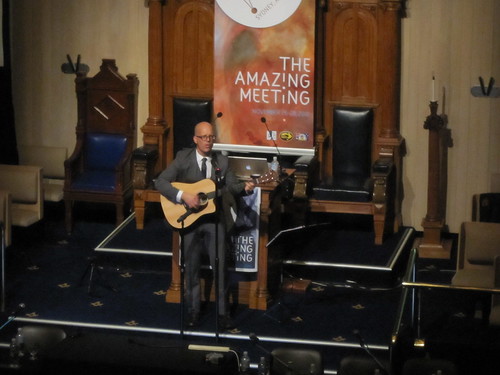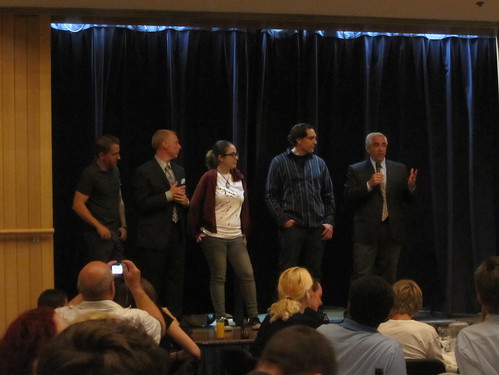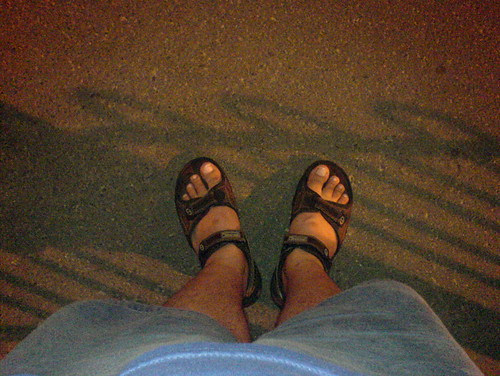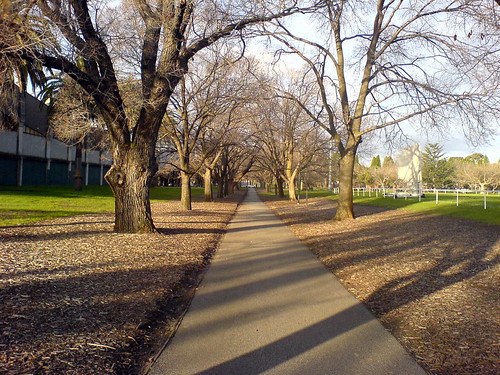I’m back in my hotel room after attending the Skeptic’s Guide to the Universe (SGU) Dinner on Day 1 of the TAM Australia conference in Sydney. And what an awesome day it’s been.
For starters, the venue is very impressive. The conference is being held at the Sydney Masonic Centre which is the unusual looking in the middle of this photo:
Most of the talks are taking place in the largest auditorium there called, as you would expect, the Grand Lodge:
Today’s sessions (mostly panel discussions) were really a preamble to the official program of talks that kicks off tomorrow morning. Here’s what happened.
Paranormal in Australia
After a quick welcome, we launched straight into a panel discussion on the paranormal both in Australia and elsewhere. Here are James Randi and Barry Williams at that panel:
Some interesting points from the discussion:
- Not all people who witness “paranormal” events want you to explain what it was that they saw; they almost prefer it to be a mystery that “has the experts baffled”
- Some of them do this because they want to feel special or self important while others just like having mystery in their lives (e.g. they want to believe)
Skeptical Activism 101
I then attended a workshop on skeptical activism (instead of the one on science based medicine that was running in parallel). This was a fun and informative discussion despite the really irritating buzzing coming from the speakers for the first hour or so. (And by ‘speakers’ I mean the audio producing equipment and not the panelists!)
Some of the resources mentioned during the workshop included:
- ‘What Do I Do Next?’ (“105 ways to promote skeptical activism”; highly recommended)
- Grassroots Skeptics (“helping local skeptics share tools, information, and strategies”)
- Atheist, skeptic, and freethough university groups across Australia (Young Australian Skeptics)
- Reason Australia (coming soon, I think)
- Skeptember (coming…well, next year, I guess)
- Skepticator (essentially, a skeptical firehose of information)
James Randi
After a quick break we reconvened in the Grand Lodge to hear James Randi talk about his life in skepticism. Very inspiring stuff. He even did a couple of magic tricks :)
Dr. Karl Kruszelnicki
Dr. Karl’s talk was (as expected) hectic, crazy, funny, random, and informative. Unfortunately, I didn’t get to take a photo of him while he was speaking.
George Hrab
We closed the day’s program with a brilliant performance by the multi-talented George Hrab.
I look forward to seeing him perform in Melbourne on 30 November :)
SGU Dinner
The after hours events for tonight were the SGU Dinner and the ‘Pieces of Mind’ performance by Simon Taylor. I would have loved to attend both but SGU is one of my favourite skeptical podcasts so it’s to their dinner that I went.
Here are all the podcasters in attendance at that dinner standing up on stage for a photo opportunity:
And here are the members of the SGU answering questions (left to right: Bob, Evan, Rebecca, Jay, and Steve):
It was really strange to hear such familiar voices coming from faces I hadn’t seen in-person before!
No one from the SGU actually made it to our table to talk to us (there were lots of tables there!) but some of them were wandering about the room so people went over and talked to them.
Overall, it was a fun event and I really enjoyed talking to the people at my table. Interesting stuff I learnt there:
- Astronomy seems to has a higher proportion of women than do other fields of science. However, as you go up the career/experience hierarchy, the proportion shifts pretty drastically to mostly men.
- The NeoCube is quite awesome.
The Fun Continues Tomorrow
So that’s it for day 1.
Tomorrow we kick off at 9am with Brian Dunning (from Skeptoid.com) and end with a harbour cruise (called ‘Skeptics Afloat’) so I’d better rest up. There is much to do this weekend.


